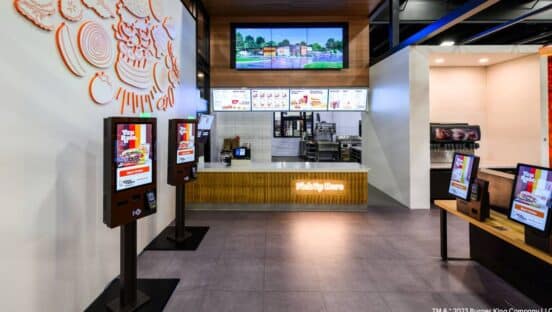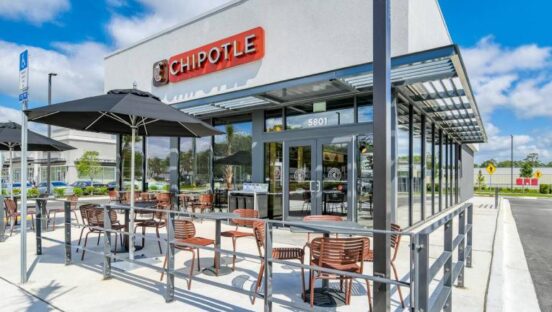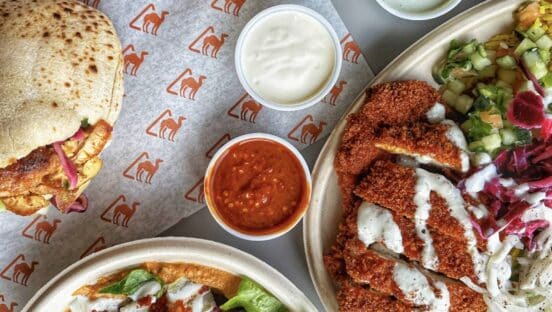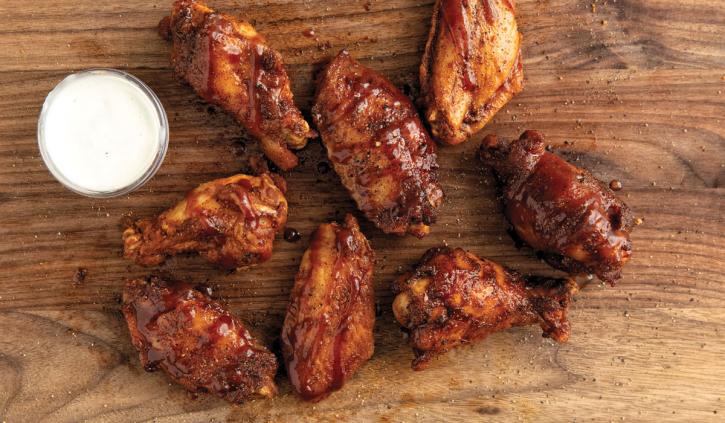
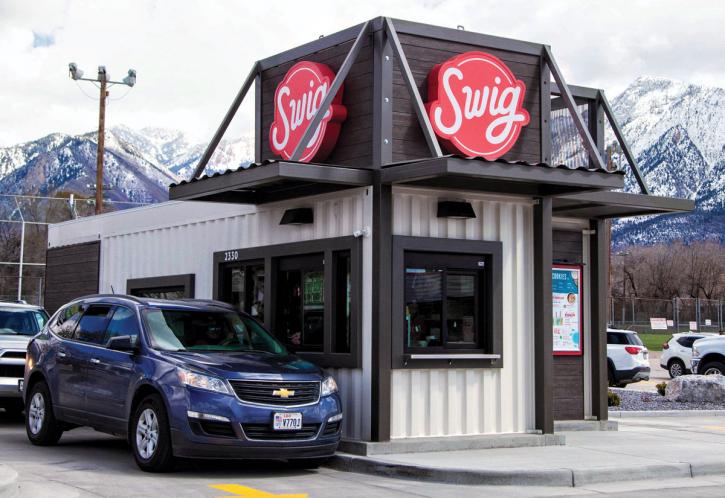
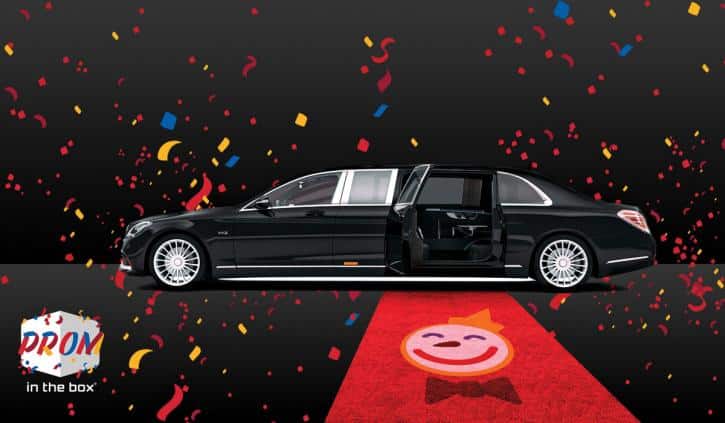
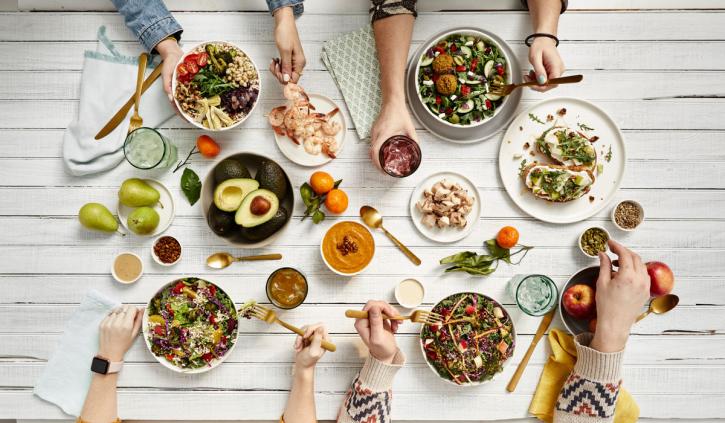
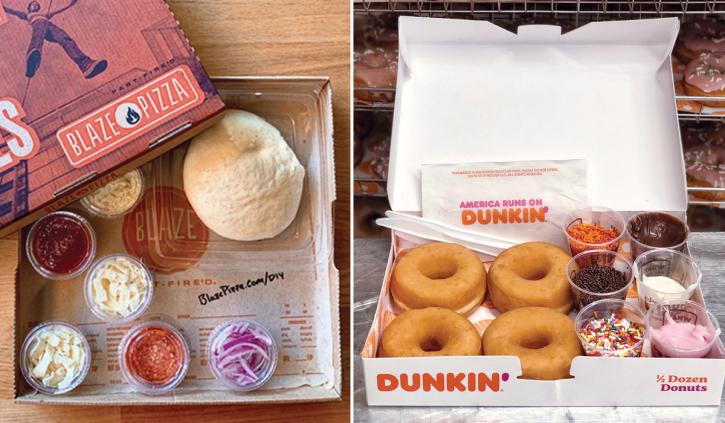
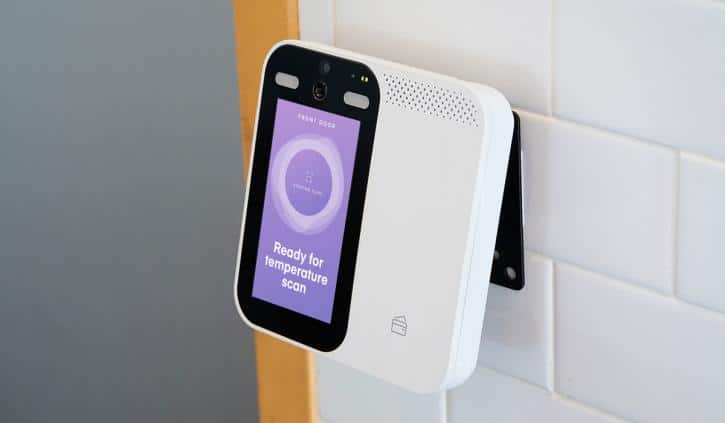
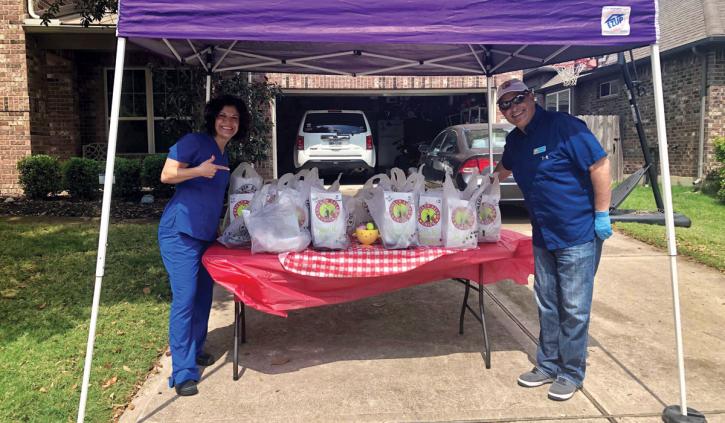
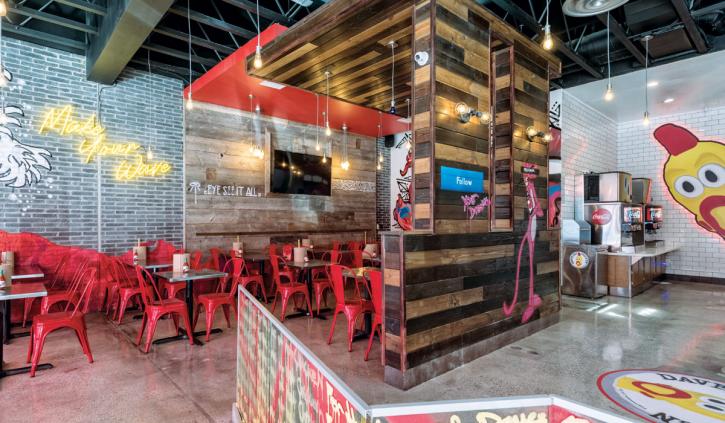
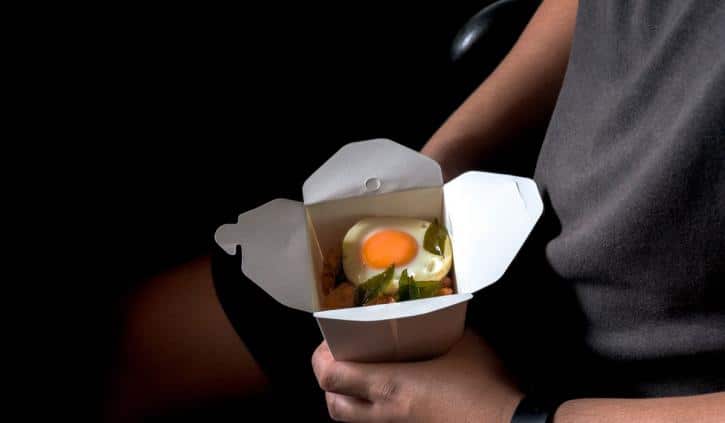
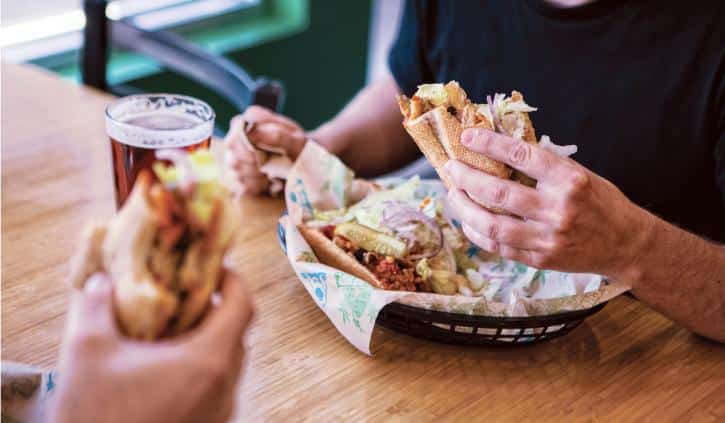
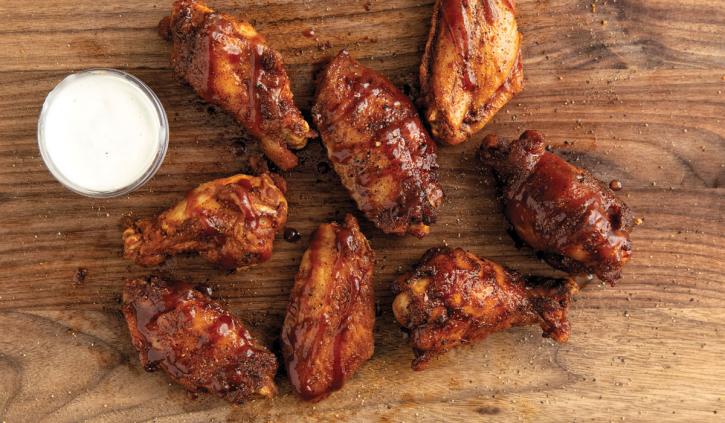
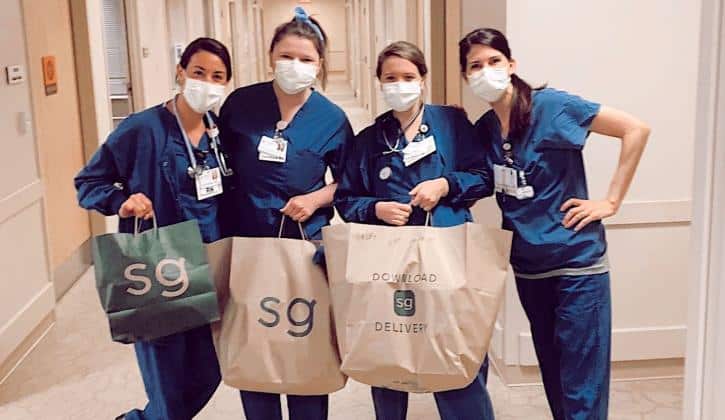
Getting creative
The restaurant sector is synonymous with experimentation. New trends and innovations in the food industry are a constant, and the pandemic only hastened this ideation process.
Sure, obstacles like dining room closures posed a monumental challenge. But when push came to shove, the industry showed a willingness to drive innovation in order to survive. Here are 11 creative ideas to come out of the crisis, with solutions that have crossed the technology, marketing, and menu spaces.
Shipping Container Brick-and-Mortars
In the pre-pandemic era, seeing a shipping container in a parking lot may have been a jarring sight. But throughout the year, shipping containers became a solution for restaurants trying to make the most of their available real estate.
This shift to shipping box containers has helped brands utilize otherwise empty parking lots to complete orders that abide by ever-changing guidelines. For Michigan-based coffee brand Biggby Coffee, modular drive-thru containers provided drive-thru units that could function within 48 hours. Other brands, like soda concept Swig, have value-engineered more intricate set-ups consisting of multiple shipping containers welded together to become an actual building.
Swig president Chase Wardrop says shipping containers have even opened doors for potential partnerships with grocery brands such as Kroger, where draw from shipping containers in a parking lot could bring in more revenue for both parties.
Online Events
2020 put a pause countless graduations, weddings, and other milestone events. But when these celebrations couldn’t take place in person, the digital space offered a safe space for people to gather. In the case of fast food chain Jack in The Box, the virtual space allowed them to execute a virtual prom for one group of Californian high school seniors.
The #PromInTheBox event featured music by DJs Dillon Francis and Diplo and amassed more than 6,000 views. The event’s engagement a 355 percent increase in views from the brand’s previous Instagram Live campaign.
The success of Jack in the Box’s virtual prom is an example of the way brands and reach their audience, albeit virtually. With live streaming platform Twitch reaching record numbers of engagement in 2020, the possibilities of brands in the virtual spaces has steam going into 2021
Even fine-dining icon Commander’s Palace hosted a 1,000-plus virtual party known as “The Zoom That Saved Wednesday” that ballooned into a national event.
The restaurant began to shipping packages across the country for $179, which included three bottles of wine, two cheese selections, a charcuterie selection from Cochon|Butcher in New Orleans, crackers, and preserves.
New and Improved Vending Machines
Vending machines have been a longtime office staple, but inventive twists on the classic have gained popularity. Healthy concept Saladworks provided one such example with its vending machine concept, Sally the Robot. The concept was already in the works at the end of 2019, but now the brand is seeing a surge of interest from places like hospitals, where sanitized environments is imperative.
Similarly, salad concept Coolgreens saw an increase in demand for its “smart fridge” salad vending machine concept from hospitals throughout the pandemic. Armed with capabilities to serve in a hygienic environment, innovative vending machine creations have new possibilities in spaces that need sanitized service.
DIY Meal Kits
Brands went about their own ways of defining what the off-premises experience entails, with some deciding to give consumers an active role in making their food—namely, through the DIY kit.
Blaze Pizza is one brand that has utilized this strategy, with kits that allow customers to pick up the pizza ingredients from their local Blaze store, then assemble the pies in their own kitchens. Dunkin’ has also hopped on the trend with donut decoration kits.
The cost-effective option also requires minimal labor, so the trend is a win-win for brands and consumers stuck at home. While the complexity of these kits vary from brand to brand, some have also included a social media component to further drive engagement.
Health Assurance Technology
Ensuring labor safety has become a no-brainer this year. But obliging masks for both guests and employees only scratches the surface to these adjustments. Creations like Squadle’s Sense Thermal Scanner, a 2020 QSR Applied Technology Awards winner, reflect efforts by companies trying to further innovate in the space.
The scanner’s ability to integrate with Squadle’s self-check apps and Checklists safety platform have shown the technological possibilities in the health space. And when health maintenance for employees and guests, comes top of the list for operators, having ways to guarantee safety are a must.
Drop-off Sites
Drive-thru was the name of the game this year, and success was all but certain for brands that had their own car-friendly system. But this posed a big problem for fast casual Chicken Salad Chick, as over half of its locations don’t have drive-thru capabilities.
From this pain point, Kathleen and Ron Ram came up with the idea to start community drop-off sites. This twist on the pop-up location involved developing an ordering system where customers pre-ordered their meals and picked it up at predetermined locations.
Ron says as many as 60–70 cars showed up at these drop-off spots, even in communities they had never visited before. The solution did more than just save the store, but placed them within the top five Chicken Salad Chicks for sales during the height of COVID-19.
Virtual Discovery Days
One of the pains of growing through a pandemic has been figuring out how to bring on new franchisees onboard despite the inability to meet with them in person. This year heralded the virtual discovery day as an alternate to the in-person discovery day process.
For chicken fast casual Dave’s Hot Chicken, franchisees could discuss their business plans through email and use real time video capabilities through technology services like Zoom, giving franchisees immediate feedback.
The one-on-one attention of a video meeting can be attractive for franchisees, as well as attract those who previously didn’t have the capabilities to attend an in-person discovery day. Though experiencing a restaurant’s physical presence is crucial before a franchisee invests, the trend may still have a place post-pandemic for its cost effectiveness.
Hashtag Movements
Driving sales during the pandemic was crucial during lowest point of the pandemic. Especially as restaurants were adjusting to the first inklings of dining room closures, the industry’s more than 15 million Americans were affected.
On March 24, a coalition of restaurants that included Panera Bread, Noodles & Company, Veggie Grill, El Torito, Jason’s Deli, The Habit Burger Grill, Lemonade, Modern Market, Pieology, Potbelly, and Chevys Fresh Mex asked people to order a delivery or pick-up meal in a unified effort called The Great American Takeout.
The Great American Takeout also asked participants to share their efforts on social media, and was so successful that a sequel followed the week after the initial. As the likes of #TakeoutTuesday have now penetrated the virtual space, the event reflected social media’s ability to create industry-wide change.
Menu Slimming
Slimmed-down menus were a key operators made this year in order to function on a leaner scale, and have allowed for flexibility for pandemic adaption.
As a result, brands have turned to using a slimmed-down menu as rebranding opportunities. For Marijuana-themed Cheba Hut, paring down its menu to the “Dank Dozen” allowed the brand to minimize ingredients when sales predictions were uncertain. Texas-based Torchy’s Tacos also got rid of its poorest-selling menu items, but brings back old flavors through its limited-time “Taco of the Month”.
Virtual Brands
The virtual brand trend has exploded since off-premises demand has driven the popularity of ghost kitchens and third-party delivery services. With the arrival of virtual brands, companies who had brick-and-mortar spaces could now carry out new products to drive sales.
Smokey Bones CEO James O’Reilly first caught on the trend last year when it launched virtual brand The Wing Experience out of Smokey Bones’ brick-and-mortar kitchens. Since COVID-19, O’Reilly says, the company leaned into our off-premises capabilities faster and more aggressively than in the past.
Operating brands in the virtual space has is franchisee potential, too. Barbecue brand Dickey’s started offering virtual kitchens in August for franchisees, and has seen success as 95 percent franchisee-operated brand. Looking into the future, this trend could mean new possibilities for brands to reach consumers off-premises.
Hospital Hospitality
COVID-19 affected the healthcare sector deeply, but a silver lining to the coronavirus has been the move for the restaurant industry to help those in need. Against the backdrop of a worldwide pandemic, restaurants have supported health workers in their own ways.
Some have utilized off-premises platforms to bring food to hospitals, while others have donated food to healthcare workers. No matter the form of assistance, restaurants have used their creativity to help those on the frontline weather the storm.








